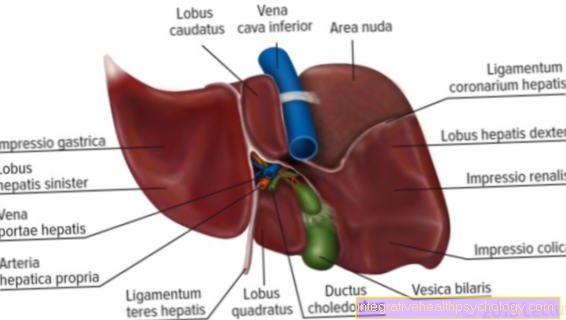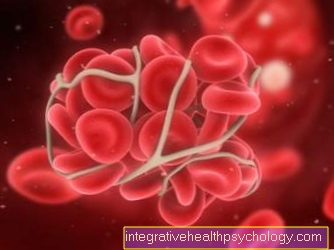Exercise science
Synonyms in the broadest sense
Training theory, athletic training
English: training science
Definition:
The training science (short. TWS) as an ordered system, which describes, explains and predicts sports training and competition, as well as enables a systematic application in sports practice.
[...] as a sub-discipline of sports science, it is primarily understood as an empirical science, the research of which aims at improving training and competition performance.
[...] training science thus provides the basis for planned and targeted training.

In relation to the performance diagnostic application, training science is assigned the following task fields:
- Structuring athletic performance (How does a sporting performance come about - e.g. which partial qualifications should a sprinter have)
- Provision of meaningful control procedures (How can athletic performance be systematically measured - e.g. which method is best used to measure aerobic endurance performance)
- Creation of setpoints (What performance should an athlete from a specific target group have - performance of 5th grade students in the 3000 meter run)
- ideal norms in sport
- statistical norms in sport
- functional norms in sport
The Identification of strengths and weaknesses in performance (Checking the current state). as well as the Review of training progress (ACTUAL - ACTUAL - value comparison) individual athletes are areas of responsibility for trainingpractical Performance diagnostics.

selected subject areas
of training science are therefore:
- Performance diagnostics
- Endurance performance diagnostics (Cooper test, Conconi test, lactate level test)
- Scientific quality criteria:
- objectivity
- Reliability
- validity
- Conditional skills:
- force (Maximum strength, Reactive power, rapid power
- endurance
- speed
- Training principles:
- Principle of the effective stress stimulus
- Principle of exercise and recovery
- Principle of progressive loading
- Principle of periodization
Introductory facts
- The exercise science owns no own mother science
- Exercise science is one Cross-sectional science (developed from practice)
- Training science evolved from the Training theory
- Exercise science is one Real science (explains the reality in training)
- Exercise science is a life science
- object: The exercising person
- Material object: Sports enthusiast
- Formal object: exercising person
compressed: Training science takes on tasks and functions in competitive sports, recreational sports, recreational sports, rehabilitation sports, disabled sports, professional sports, senior sports and school sports to maximize, optimize, stabilize, restore and minimize the reduction in performance.
Origin of training science
From the master's teaching the special training teaching developed, from this the general training teaching, from which the scientific training theory.
While exercise science (TWS) used to refer exclusively to high-performance sport, today other fields of action are also included.
The following fields of action are processed with training science:
- (High) competitive sport - Performance maximization / optimization
- Popular sport - rehabilitation, stabilization, prophylaxis
- Age sports - Minimizing reduction
- School sports - as an auxiliary science of sport didactics
TWS as an integrative science
The following disciplines are combined in training science as an integrative science:
- Biomechanics (to analyze a wide variety of techniques)
- sports medicine (Sports physiology and anatomy in particular)
- Sports psychology (to describe motivational processes)
- Sports sociology (Drop-out, talent scouting)
Training science as empirical science
The knowledge gained in training science is based on accumulated experience. From this, hypotheses are formed and checked in training practice. Exercise science is therefore a hypothetical science.
Training science as applied science
The TWS emerged from training practice and is used for practical training events
Laws of exercise science
- deterministic laws (exact description, e.g. immersion speeds for tower jumping)
- indeterministic laws (not completely exact description, run-up speed for long jump)
Research strategies of training science
- Basic research (General generation of background knowledge)
- Application research (Provision of rules / regularities generated in science)
- Evaluation research (scientific processing knowledge gathered from practice)
introduction
[...] The Exercise science, as empirical science, is a sub-area of sports science with the aim of analyze athletic performance to be able to draw conclusions about the trainability.
[...] The Exercise science, as applied science, integrates findings from other sciences in the canon of sports science in order to better explain the performance-limiting factors of sports training. These sciences include a few others:
- Sports psychology
- Sports sociology
- anatomy
- Exercise Physiologye and
- Biomechanics.
Although training theory is often used as a synonym for training science in the literature, it is more a form of applying scientific knowledge to sport.
What is training - The concept of training
[...] Planned and systematic realization to achieve special goals in and through sport.
from a sports medicine point of view:
[...] systematic repetition of supra-threshold stimuli with changes in the functional state and morphological adaptation with the aim of increasing performance.
training is a complex process of sporting activities with the intention of achieving a desired level of performance through objective, continuous and planned training. This does not necessarily have to be an improvement in athletic performance. First the performance-determining and performance-limiting parameters of the sport must be determined in order to improve the performance of the sport based on this. For competition-oriented sport, training means reaching the optimal functional state at a certain point in time through periodization and cycling of the Training planning.
Performance-determining factors:
- Strength, speed, endurance, flexibility
- Movement coordination
- Psychological factors
- Cooperation skills
For the science of training, the term training is only important in the context of sport. A distinction is made between the training goals:
- systematic training around goals in sports to reach (Performance improvement, competition - victory at the Olympics)
- Training about goals through sport to reach (Personality development, ability to cooperate, but also the promotion of health)
Content
The contents of training science include all areas of sport Performance optimization and Competition preparation in the conditional and coordinative area. In the conditional area, a distinction is made between Strength, endurance, speed and agility. Training science uses numerous methods to make performance improvements measurable and thus comparable.
What do you need training science for?
The areas of application of the Exercise science are so diverse and range from training beginners to performance improvement of top athletes. With the help of training science you can achieve optimal performance in all sports through specific Training methods can be achieved.
Training science analyzes the development of athletic performance and thus determines which factors are relevant to achieving the training goal and which are not. In addition, training science develops diagnostic methods to make sporting performance measurable and creates target values for practice.
Training science is therefore upstream of training practice.
In training practice, actual values are determined, actual values are compared with target values (actual target values) and training gains are determined on the basis of actual values.
Training science is therefore indispensable for adequate, targeted, practical training.
Exercise science and school sports

The importance of exercise science for school sport.
[...] fearlier Training according to scientific and pedagogical principles was defined as a process of athletic perfection through systematic and slow action on performance and willingness to perform with the aim of bringing athletes to high and highest performance.
today we know that this definition is too related to competitive sport.
[...] today one defines training as open to everyone (beginners, advanced, competitive sport), as pupils, young people, active people, senior athletes for those who want to increase, maintain or restore their performance.
In addition, training denotes the planned and systematic implementation of measures to achieve sustainable goals in sports and through sport.
- In sport / internal sport goals: Improvement of athletic performance
- Through sports / non-sports goals: personality-building properties.
Applications of training science for school sports:
- Improvement of skills and athletic performance (based on the middle and lower performance level
- Prevention, or maintenance of athletic performance and physical condition for the prophylaxis of long-term illnesses.
- rehabilitation (Special school gymnastics in a broader sense). In the form of regaining a physical state of performance.
Two prerequisites must be met so that training science can influence sports didactics:
- The motor learning target area must have a high priority in physical education. (Health, fitness, performance must be accepted)
- Openness to empirical research
Training science can support sports didactics in the following areas:
- Formulation of motor Learn- and Training goals
- Establishing suitable Learn- and Training methods
- Selection more appropriate Learn- and Training content
- Search for adequate Learn- and Training equipment
The 5 fields of activity of training science for sports didactics:
- Of the construction a single sport lesson
- Long-term planning of physical education ;: From the preparation of the timetable to the preparation of an annual plan
- Grouping forms and measures of internal and external differentiation
- Distribution of curriculum goals on the different grades
- Precise Formulation of curriculum goals (especially the health perspective)
Since the controllability of performance / learning goals is an essential factor in sports didactics, it is the task of performance diagnostics to provide adequate methods with which performance success can be measured. In addition, training science provides statistical norms for classifying individual performance in a specific target group.
According to HOHMANN et al. In 2002, the TWS contributes to:
- Basic research
- Application research
- Evaluation research
The term performance
In the performance, an anticipated event should be consciously realized, which is determined by a value system of society. Thus, there is a performance request in advance in the performance process.
A distinction is made between:
- Performance operation with performance as a process
- Product of an activity with performance as a result.
Performance criteria:
- Performances must be intentional
- Services must be determined by the situation
- Services have to be aimed at change
- Achievements need to be aware.
One particularly combines performance with effort. Thus, objectively the same performance can lead to differences in subjective performance.
The dimensions of the achievement are given either in rank positions or in measures.
Technical terminology / training science lexicon
- Strength deficit: In practice: difference between isometric (holding) work and eccentric (yielding) work
In theory: difference between absolute strength and isometric maximum strength - Training age: period since the beginning of the training. (e.g. I have been training for 3 years)
- Training type: Conditional, coordinative (technical), tactical (e.g. what is being trained in training today?)
- Training stress: Effect of the training load on the organism (with what intensity was the training? Attention! Quantitatively the same load leads to interpersonal different demands)
- Training load: The entirety of the training stimuli acting on an athlete (quantity of training)
- Training duration: Temporal stress of the training stimulus or the series of stimuli (e.g. 30 min. Running)
- Training session: Smallest self-contained unit of the training load
- Training frequency: Number of training units in a training segment (number of training units per week / per day)
- Training content: Type of training depending on the training goal (e.g. strength training with the goal of building muscle)
- Training intensity: Level of training intensity of the training within the training unit. (E.g. bench press with 80% of maximum strength)
- Training method: Scheduled procedure for achieving the training goals characterized by frequency, intensity, length of breaks and extent.
- Training principle: Principles of sports training / training rules.
Further information
You can find more information on this topic here:
- Training principles
- Muscle building
- Strength training
- Fat burning
- Movement science
- Body types





























